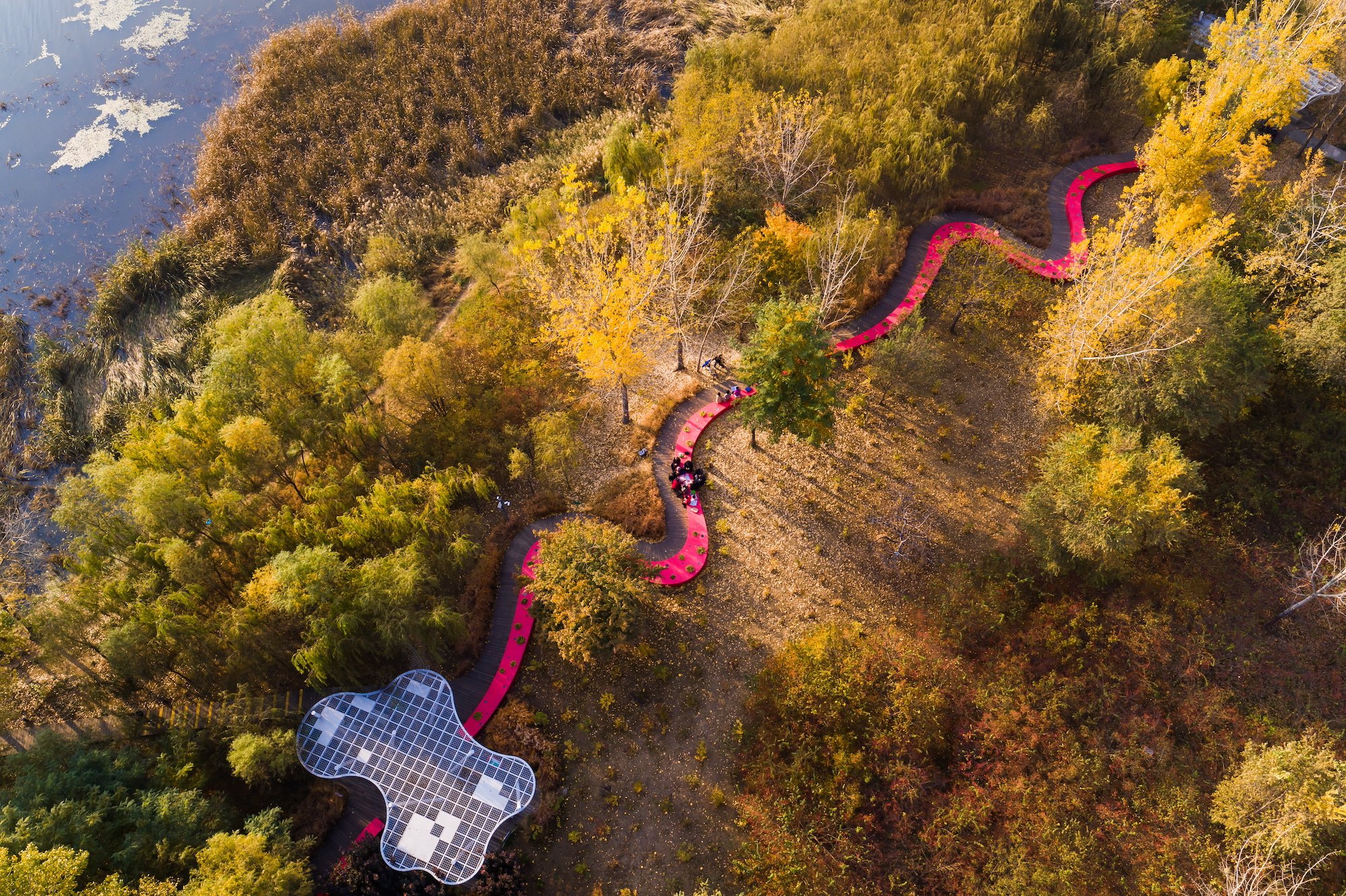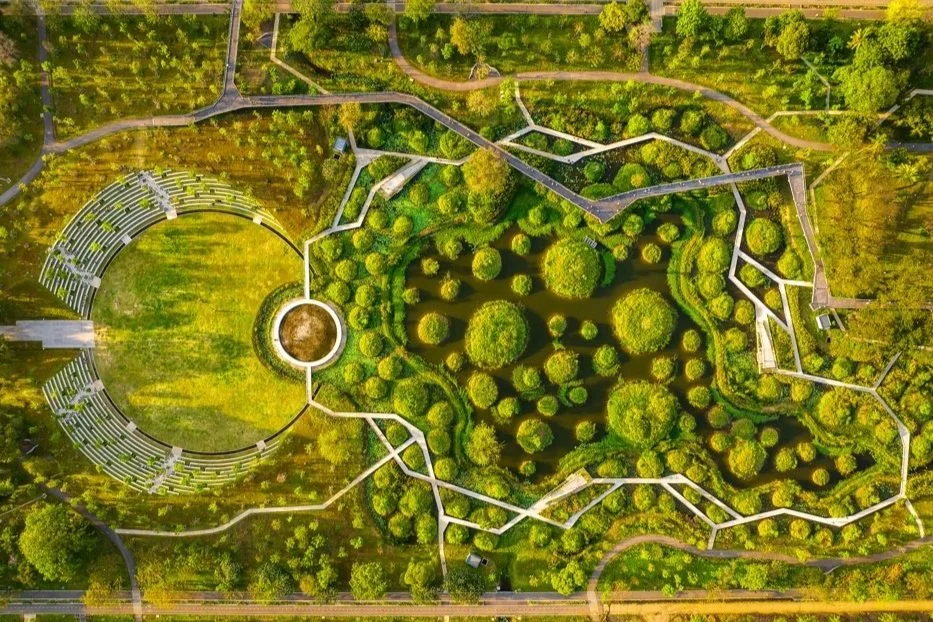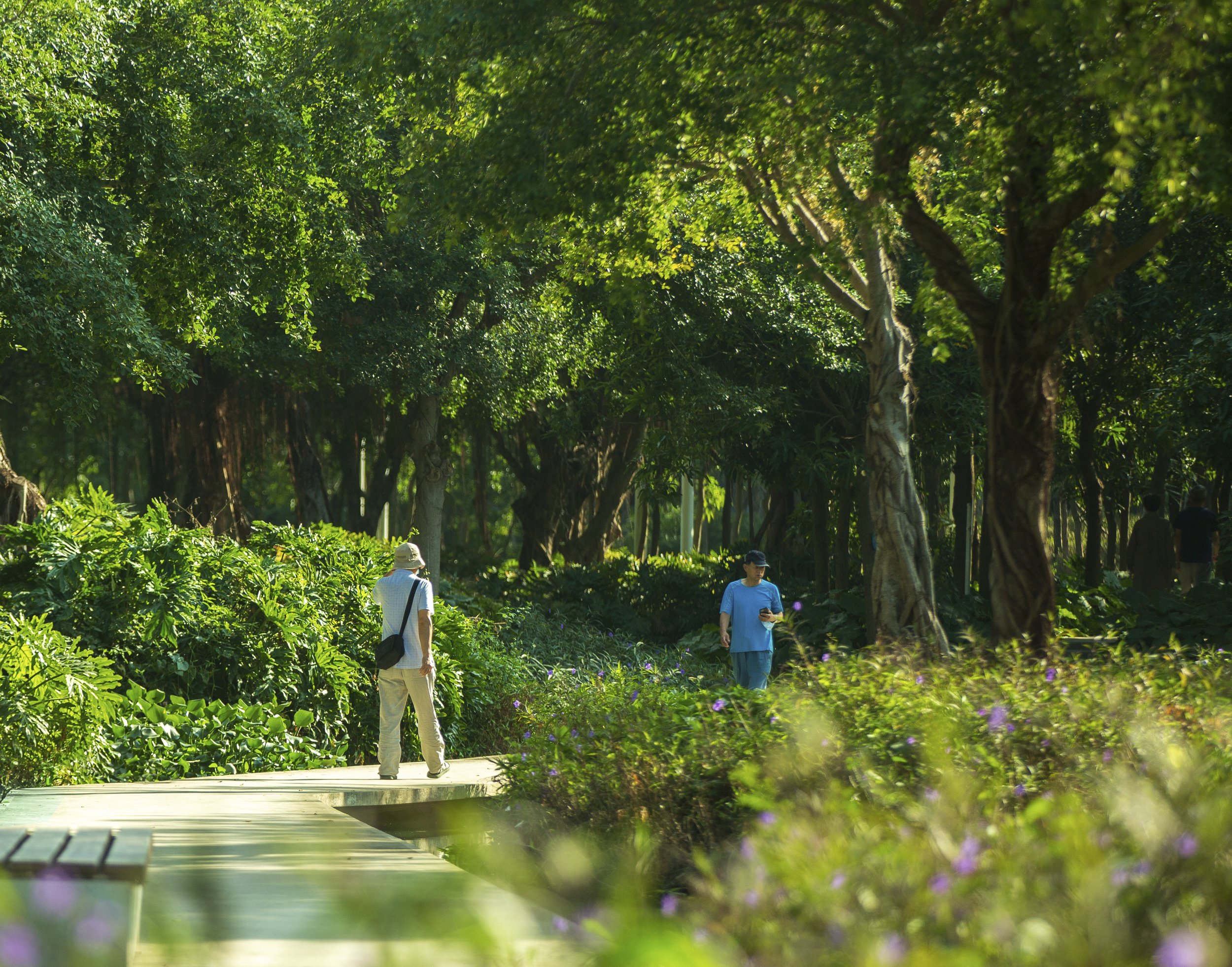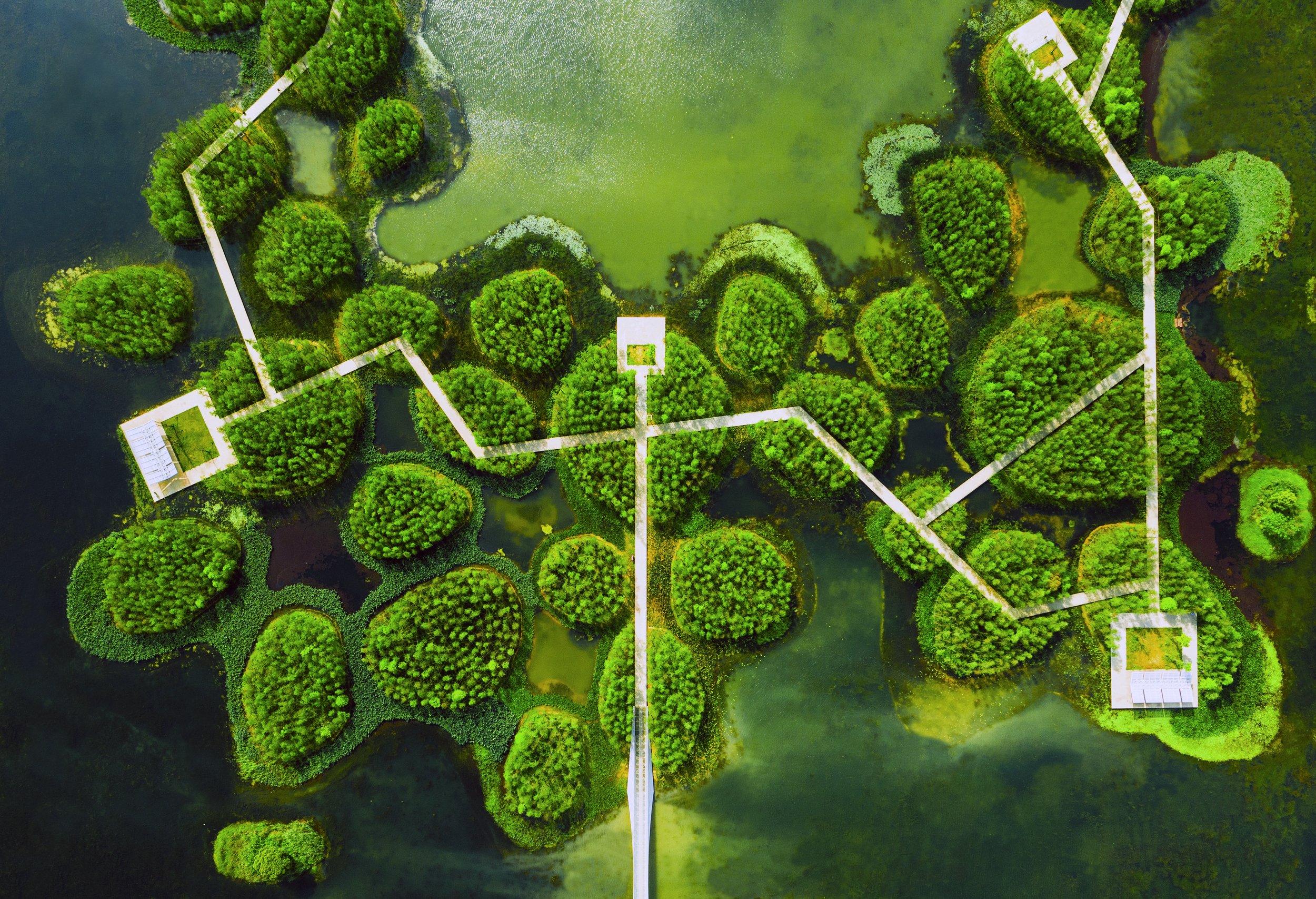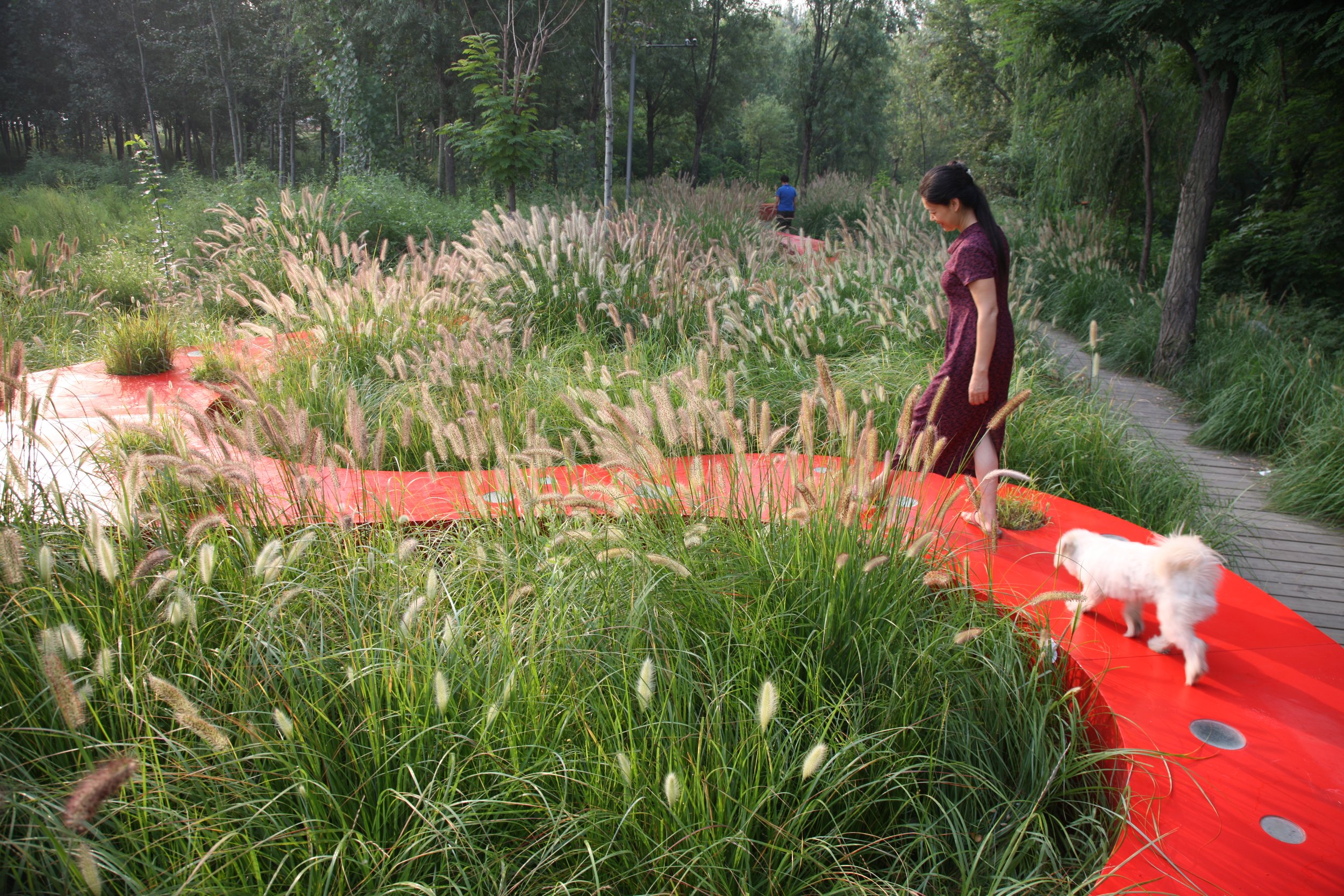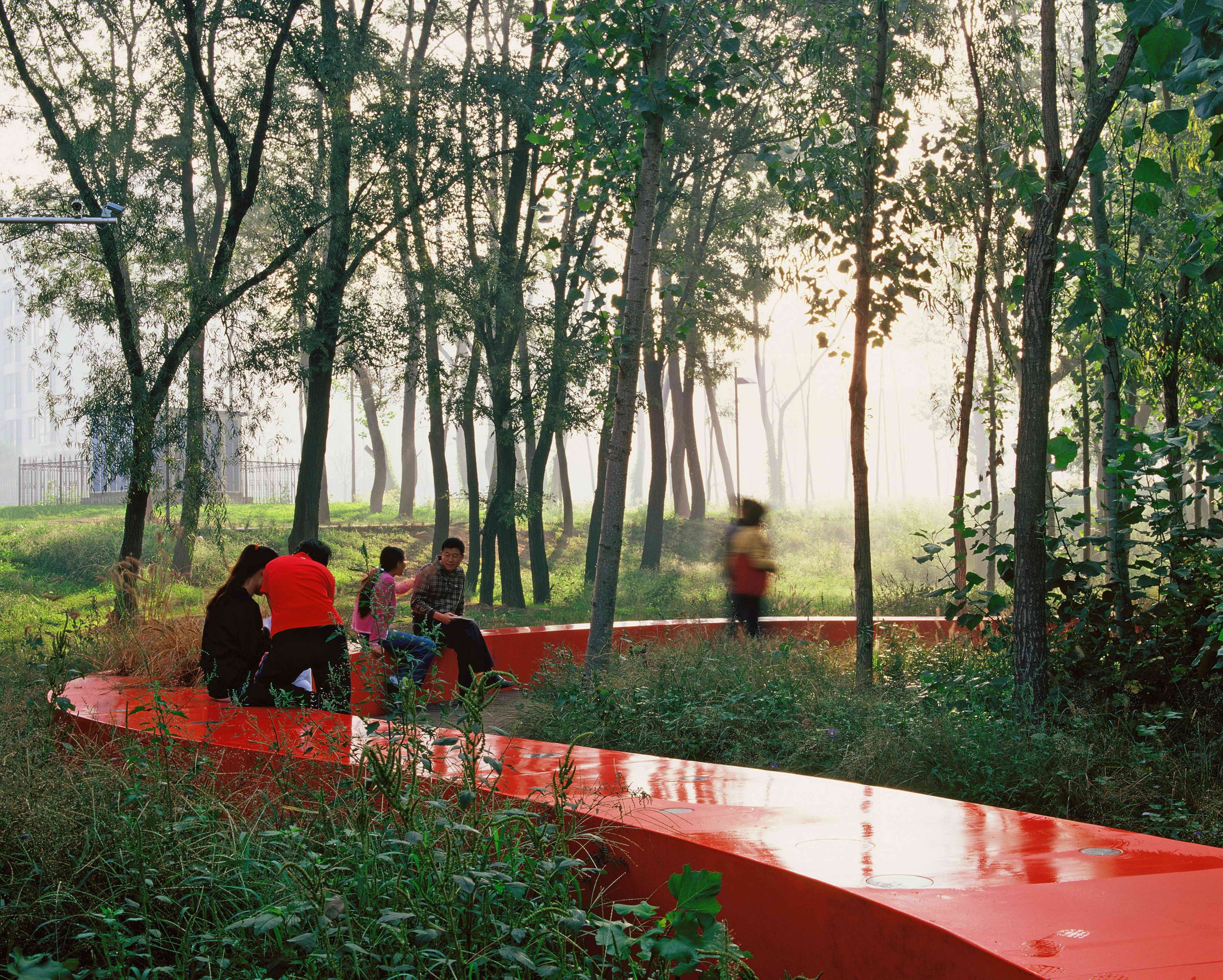The Sponge City That Weathers Storms and Reclaims Nature
Landscape architect Kongjian Yu and his team create green infrastructure to save cities from flooding while regenerating their natural fabric
Words by Harriet Thorpe. Images by Turenscape, courtesy of The Cultural Landscape Foundation
Nanchang Fish Tail Park in Nanchang, Jiangxi Province, China (2021)
Over the past few years, flash floods in cities have increasingly hit the headlines. In June 2021, London experienced a series of heavy downpours causing road and station closures, homes filled with water and sewage. In September 2023, New York experienced its wettest month for 140 years; a sea lion escaped its enclosure, a terminal at LaGuardia was forced to shut, as did the subway and wider rail network, people’s homes and businesses suffered extensive damage.
Flash floods — caused by short yet extremely heavy downpours — and other extreme weather events are on the rise, a trend that’s predicted to continue. It’s partly due to how, thanks to global warming, glaciers are melting and the atmosphere can essentially hold more water, which then gets released as rain or snow. Switzerland’s glaciers experienced their second worst melt rate in 2022, following the worst ever melt rate in 2021 (a trend that shows glaciers in the Alps may vanish before the end of the century) and in 2023 Antarctica’s sea ice reached its lowest level since records began in 1979.
Left: Red Ribbon Park in Qinhuangdao, Hebei Province, China (2013); Right: Benjakitti Forest Park in Bangkok, Thailand, 2022
These flash floods cause problems for communities — particularly those in cities. Big, densely populated cities often have a lot of concrete surfaces that don’t allow rainwater to drain naturally into the earth, forcing it into man-made sewage and stormwater drainage systems that just aren’t equipped for these increasing water levels. But what if instead of a concrete shield to the earth, a city could be a sponge? Could wetlands, trees, rain gardens, green roofs, permeable pavements and bioswales be designed into the fabric of cities to absorb water into the earth and prevent these problems?
This ‘green infrastructure’ is at the heart of Chinese landscape architect Kongjian Yu’s award-winning Sponge City concept. The Sponge City is designed to naturally quell the effects of flash floods in urban environments and involves a site specific layering of techniques tailored to the local topography and climate. To date, Yu and his Beijing-based landscape architecture firm Turenscape have implemented Sponge City projects in more than 200 cities worldwide from China to France, Singapore, Thailand and the US.
Yu has been studying and designing for urban water systems since the mid-1990s, first exploring the topic while studying at Harvard’s Graduate School of Design. He launched the Sponge City concept in 2000 with the Zhongguancun Life Science Park project in Beijing, designed to collect and filter rainwater through an intelligent wetland system. Flooding affects over two thirds of Chinese cities, so politicians were naturally interested in this design and from 2004 began to take note. When an extreme rainstorm hit Beijing in 2012 resulting in the deaths of 79 people, Sponge City was adopted as national policy, resulting in 70 new Sponge City’s and a goal set that by 2030, 80% of cities must absorb 70% of their rainfall.
(1) Sanya Dong’an Wetland Park and (3) Sanya Mangrove Park in Sanya, Hainan Province, China; (2) Nanchang Fish Tail Park in Nanchang, Jiangxi Province, China.
One successful example is Hainan Island, just off the southern coast of China. It has a monsoon climate, exacerbated by climate change causing frequent, severe flooding. In the two most densely populated cities Haikou and Sanya, Sponge City designs were installed from 2015. In Haikou, concrete flood walls of the 23km-long Meishe River were removed and replaced with a green embankment. A ‘terraced mosaic’ of wetlands and bioswales (water-absorbing earthen channels) were constructed alongside the river with natural water cleaning functions, with new footpaths and cycle lanes integrated. In Sanya, mangroves were restored over 10 hectares of the Sanya River bank, as well as a ‘necklace’ of ponding, diking and islanding inspired by ancient water management systems in the Pearl River Delta. Fish and bird populations have increased and the wetland can accommodate 830,000 cubic metres of storm water.
In other places, Sponge City projects have reclaimed previously industrial land. For example, at Zhongshan Shipyard Park (2001) in Guandong Province, an abandoned 1950s shipyard is now rewilded and layered with gardens, alongside remnants of industrial heritage. At Nanchang Fish Tail Park (2022), a polluted former fish farm and coal ash dump site is now a 51-hectare floating dawn redwood and cypress forest. At Benjakitti Forest Park (2023) in Bangkok, a former tobacco factory has been transformed into the largest downtown public space with islands that provide habitats and manage stormwater.
Though China rapidly urbanised in the 21st century, the country has a wealth of sophisticated ancient knowledge of water management. Farmers would regulate water in rainy seasons using rice paddy terraces, setting aside 20% of their cultivated land for water management. Born in 1963, Yu personally experienced this shift. He grew up in a village in Jinhua, Zhejiang Province, where landscape design was used to channel water for crop irrigation. From the 1970s, he saw an influx of pesticide-use and concrete water structures. Overcoming social challenges of the Cultural Revolution (1966-76), he enrolled at the Beijing Forestry University in 1980, against all odds, to study landscape gardening, with the ambition to bring these ancient techniques back to the modern world.
Oberlander Prize Laureate Kongjian Yu sketching the concept for Chinatown Park in Boston, MA (2003)
Yu has now established Peking University’s Landscape Architecture Department (which has graduated more than 1,200 students), authored more than 20 books, lectured across the world and won numerous awards. He has been an emissary of sustainable design and an inspiration in numerous fields — from politics, to education and built projects that improve the lives of millions of people and the earth that we live on every day. In 2023, Yu was recognised for his work with the prestigious Cornelia Hahn Oberlander International Prize, known as the Pritzker Prize of Landscape Architecture (notably, landscape architect Cornelia Hahn Oberlander is credited as one of the first landscape architects to connect landscape to climate change through her work).
Incredible in its efficiency, the Sponge City concept not only mitigates the danger of flash floods for cities but also improves their livability in many other ways from cleaning water to providing leisure space for residents’ wellbeing. The firm’s name ‘Turenscape’ combines the Chinese characters “Tu” 土, meaning dirt, earth, or the land, and “Ren” 人, meaning people, man, or human being. Because for Yu, landscape architecture and design is very closely connected to equality and accessibility. It is part of a human quest to create harmony between people and the land, so we can continue existing on this earth, and this is a quest that unites us all.
Follow Kongjian Yu and his studio’s latest works @kongjianyu_turenscape.


